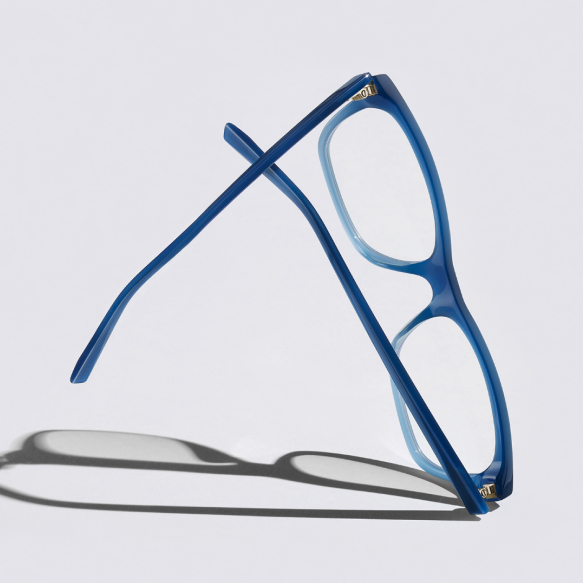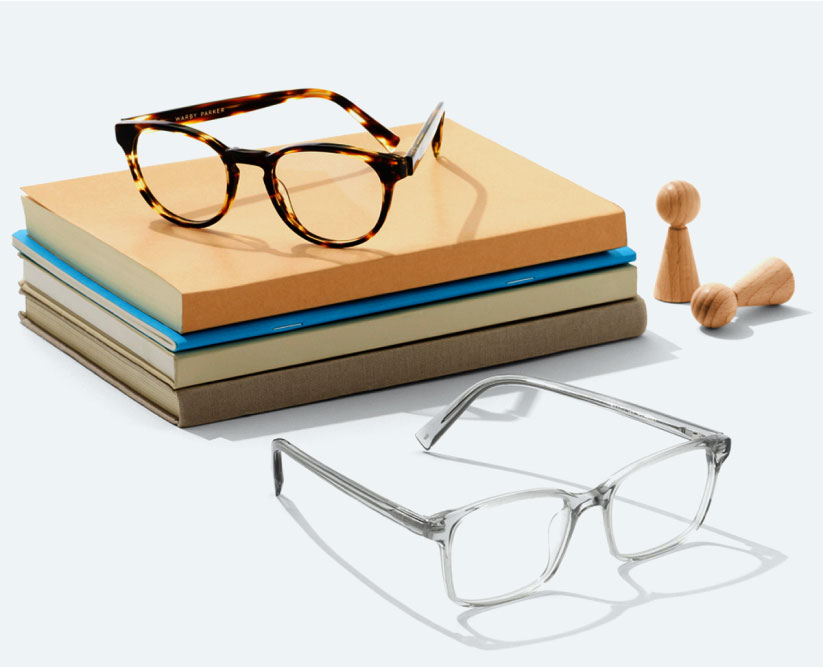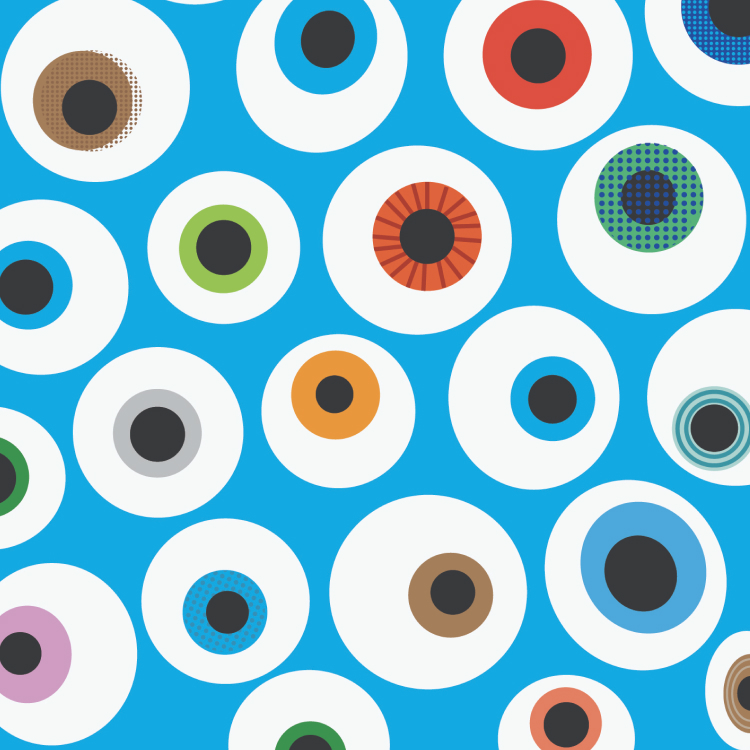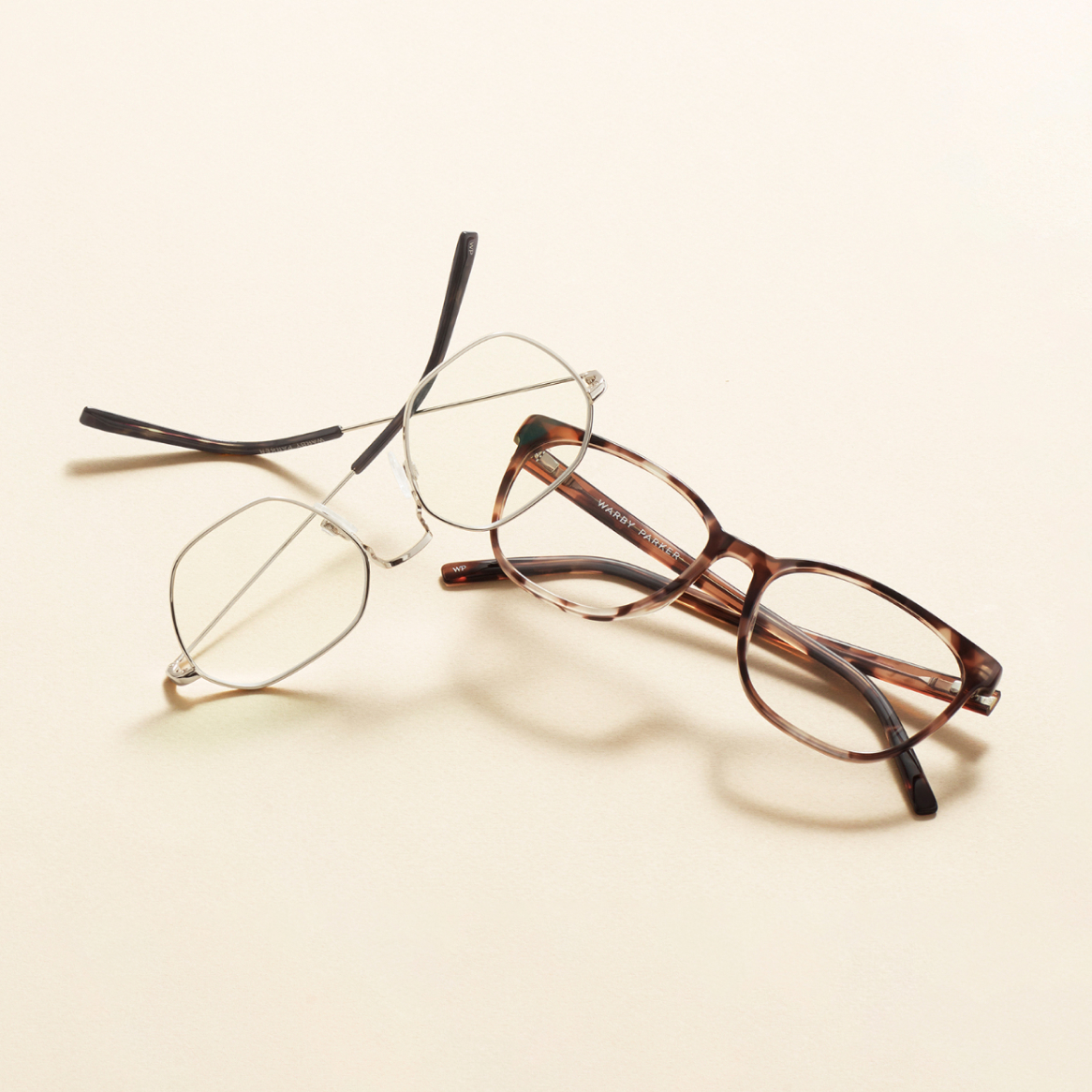Have you ever found yourself squinting at a line of text and asking yourself, “Do I need glasses?”
You probably know some of the more common symptoms that signal a need for prescription glasses: not being able to read the board in class, blurry objects in the distance, etc. But what about symptoms like headaches or watery eyes that we don’t automatically associate with vision?
If you’re wondering how to know whether you need glasses (or contacts), scheduling an appointment with an optometrist or ophthalmologist is the only way to find out for certain. Recognizing the signs that you might need glasses can help you decide if it’s time to make an appointment.
Signs You Might Need Glasses
Night Blindness and Trouble Adjusting to Light
If walking from the bedroom to the bathroom in the middle of the night or discerning your surroundings while night driving seems more difficult than usual, you may be experiencing night blindness. This condition can also increase the time it takes for your eyes to adjust from dark to light, and vice versa. Our ability to transition our eyes from light to dark slowly decreases as we age, but it’s possible that another underlying condition is affecting your eyes. If you experience these symptoms, it’s a good idea to make an appointment with an eye doctor as soon as possible.
Squinting To See Clearly
Sometimes, squinting can slightly improve your vision if you’re struggling to see something in detail. If you frequently find yourself squinting to see more clearly, it’s time to schedule an eye exam.
Watery Eyes
Watery eyes may be a sign you’re experiencing vision problems. However, watery eyes can also indicate issues like allergies, dry eyes, or even a thyroid condition. If your eyes are watering excessively, make an appointment with your eye doctor and/or your primary care provider.
Rubbing Your Eyes
If you notice you’re rubbing your eyes throughout the day, you may be experiencing eye fatigue. This can be a sign you’re struggling to see and may benefit from glasses. (Anti-fatigue lenses can be especially helpful if you’re prone to eye strain.)
Blurry Vision
Difficulty focusing on blurred objects—far away or up close—may mean you need glasses. If you find it difficult to make out street signs while driving or read text in books, you may benefit from eyeglasses or contacts.
Double Vision
Seeing double can be a sign of a serious eye disorder or a result of other health conditions. The causes of double vision vary in severity, but the symptom should never be ignored. If you experience double vision, make an appointment with an eyecare professional and/or your primary care provider as soon as possible.
Frequent Headaches
Headaches don’t automatically mean you need glasses. However, frequent headaches, especially when experienced midday or after staring at screens, may be a sign of vision problems that could be treated with corrective lenses. Headaches of increasing severity or intensity should be evaluated as soon as possible.
Common Eye Problems That Require Glasses
Experiencing any of the above symptoms might mean you need glasses (a visit to the optometrist will help you know for sure). But what do these symptoms actually mean? Why do people need glasses in the first place?
According to the National Eye Institute (NEI), refractive errors are the most common kind of vision problems. A refractive error occurs when the shape of your eye (or structures within it) prevents incoming light from being focused perfectly on your retina. Refractive errors include:
- Astigmatism
- Presbyopia
- Nearsightedness (a.k.a. myopia)
- Farsightedness (a.k.a. hyperopia)
Your symptoms may mean you have one or more of these common eye problems.
Astigmatism
Astigmatism occurs when your cornea (the clear layer on the front of your eye) or your lens (a clear, curved disk that sits inside the eye) is not perfectly spherical. You may have heard astigmatism means that an eye is “football” or “almond” shaped—a reference to the shape of the cornea or lens. As light enters your eye, this shape abnormality results in light not focusing perfectly on the retina. An astigmatism affects both distance and near vision.
Common symptoms of astigmatism include:
- Poor night vision
- Squinting to see clearly
- Blurry vision
- Headaches
- Eye strain
Astigmatism is diagnosed through a comprehensive eye exam. Your eye doctor will help you determine whether eyeglasses or toric contacts will be suitable for you, or if you’re a candidate for refractive surgery.
Presbyopia
Presbyopia occurs most commonly in middle-aged and older adults and is a normal part of the aging process. As you age, your lens becomes less flexible and can’t focus light onto the retina as well. Common symptoms of presbyopia include:
- Headaches
- Eye strain
- Holding reading materials farther away to read them
- Difficulty seeing materials up close
Most people experience presbyopia as they age, typically after the age of 40. Presbyopia is diagnosed with an eye exam.
Simple changes like reading large-print books, increasing font size on your phone, using a reading light, and holding reading materials at a farther distance can help relieve the symptoms of presbyopia, but they’re not long-term fixes. Reading glasses, progressive lenses, or multifocal contacts are often recommended to treat the symptoms of presbyopia more effectively.
Nearsightedness
Nearsightedness, or myopia, typically causes objects that are far away to appear blurry (although if severe enough, it can affect your near vision as well). This occurs when the shape of the eye causes light to focus in front of the retina, as opposed to exactly on it. Common symptoms of nearsightedness include:
- Difficulty seeing far away
- Squinting to see clearly
- Eye strain
Although less common, people with nearsightedness may experience regular headaches. Those with severe nearsightedness, or high myopia, may be at higher risk for other eye conditions (such as retinal detachment) and should have their eyes screened more regularly.
Nearsightedness is diagnosed with a comprehensive eye exam. If you’re nearsighted, your eye doctor may prescribe you eyeglasses or contact lenses. As with astigmatism, your eye doctor will be able to determine whether you’re a candidate for refractive surgery.
Farsightedness
Farsightedness, or hyperopia, typically causes objects close to you to appear blurry (although it can also affect your distance vision). This occurs when the shape of the eye causes light to focus behind the retina, as opposed to on it. Common symptoms of farsightedness include:
- Difficulty seeing up close
- Headaches (especially when reading)
- Eye strain
Farsightedness is diagnosed with a comprehensive eye exam. Farsighted people may see relatively clearly but could need corrective lenses to address the symptoms listed above. If you’re farsighted, your eye doctor may prescribe you eyeglasses or contact lenses.
Signs Your Child Might Need Glasses
Many children’s symptoms of needing glasses are similar to adult symptoms. Among them are eye rubbing, headaches, and squinting. Additional signs could include:
- Closing one eye
- Clumsiness, like bumping into objects
- Difficulty with reading, schoolwork, or homework
- Eye pain
- Holding devices or books close to the face
- Sitting close to screens
- Tilting the head to see
In addition to vision correction, kids in particular might need glasses to address eye conditions like amblyopia (lazy eye) or strabismus (misaligned or “crossed” eyes). Detecting children’s vision and eye issues early is important for child development, school performance, health, and overall quality of life.
So it’s recommended for children to get a comprehensive pediatric eye exam within their first year and between ages 3 and 5. School-age kids should undergo an annual eye exam, even if they already get vision screenings by a doctor or school nurse.
How Do I Know if I Need Glasses?
Visiting an eye doctor is the best way to find out if you need glasses. It’s possible that you don’t need glasses but may benefit from treatment for an eye issue like dry eye syndrome or an eye infection.
A comprehensive eye exam will help you understand the cause of your symptoms and create a plan to correct them, whether that involves prescription eyeglasses, readers, contact lenses, or surgery. If you’re experiencing any of the symptoms listed above, it’s time to schedule an appointment.






